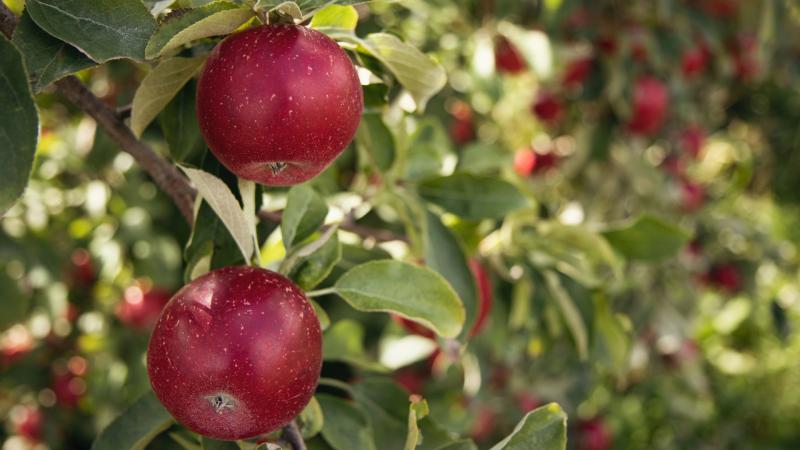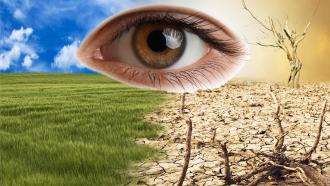
Photo by Jen Theodore on Unsplash
Red, juicy, and delicious—apples from the state of Himachal Pradesh are a treat to devour. For the apple farmers, though, these fruits leave a sour taste. The yields from apple orchards highly depend on the chilling winters in this region, which precedes fruiting of the trees, and the warm weather that follows, just before harvesting. The vagaries of climate and the warming planet are leaving farmers grappling for a good yield.
The change in the climate isn’t too new. Farmers in Himachal Pradesh have recognised the temperature variations, and since the early 1980s have shifted their orchards to higher altitudes for better yields. In the 1980s, the orchards were generally seen at an elevation of 1200-1500 meters above sea level. By the early 2000s, they shifted upwards to around 1500-2000 meters, and by 2014, apples were cultivated at an altitude as high as 3500 meters.
But, why are they moving higher up in the Himalayas? This shift is a result of the not-so-cold-anymore winters, says a recent study published in the journal PLOS ONE. The study, conducted by researchers from India, Canada, and Japan, analysed the changes in the weather patterns of the region with the help of temperature and rainfall data obtained from the India Meteorological Department.
The study found that between 1975-2014, the southern regions of Himachal Pradesh, which are at a lower altitude, had a fall in the average low-temperature duration in winters by about 60 hours. There was a decline in the annual rainfall each year and an increase in the average temperature by 0.5°C. These changes, the researchers say, are due to global warming. Consequently, the northern districts of the state, which are at a higher elevation and colder, are now more favourable for apple cultivation due to the temperatures there. But, not everything seems rosy there too.
“In the northern districts nowadays the required chilling hours along with increasing temperature are conducive for apple growth. However, cultivable land, in general, is less in northern districts because of higher elevation, difficult terrain and topography, and more snow cover area. But it's a fact that apple cultivation areas in northern districts are expanding,” says Dr Netrananda Sahu, the corresponding author of the study. He is an Assistant Professor at the Department of Geography, University of Delhi.
The study warns that the worst is yet to come, as the trend of rising temperature is likely to accelerate soon. If it happens, there could be a broader threat to the livelihoods of farmers who depend on their orchards.
“It is a warning not only for apple farmers but also for agriculture in general as climate scenarios are changing globally,” adds Dr Sahu.
Geoengineering comes to aid, albeit as a stopgap
In light of such climate change-induced disasters anticipated, technological interventions to combat global warming are being considered. Geoengineering—the deliberate intervention in the Earth’s natural system—could be a solution. A recent study, published in the journal Climatic Change, shows that spraying aerosols of sulphate particles into the atmosphere could block solar radiation and combat global warming. It suggests spraying into the stratosphere—a layer of our atmosphere extending up to 31 miles— to aid the apple cultivation of Himachal Pradesh.
The researchers used physically-based climate models to analyse the impact of starting and ending the spraying of stratospheric aerosols on the apple cultivation. In the first phase, they modelled the climate of the region between the years 2020-2069, taking into account spraying of the aerosols. The results show that while spraying sulphate particles doesn’t cancel the effect of climate change entirely, it indeed suppresses the increase in temperature by around 1-1.2°C in the initial phase. Although encouraging, there is a big caveat—once the spraying stops, the consequences could be worse.
“Locally, geoengineering might help for a while, but globally, it could do more harm,” warns Dr Alan Robock. He is a distinguished professor at the Department of Environmental Sciences, Rutgers University in the US, and one of the authors of the study.
When the researchers modelled the climate of the region for the years 2075-2089 while discontinuing the spraying of aerosols, the temperatures reached the levels that it would, with global warming, and the rate of change in temperature was found to be higher. The authors apprise that this change can lead to total crop failure and will possibly be more adverse than the situation with no such technological intervention
Could this backfiring be controlled? The researchers are hopeful, but uncertain too. “When the process is implemented to reduce global warming by a smaller offset, say, less than 1°C, the resulting temperature change may not be that high,” says Dr Sandeep Sahany. He is an assistant professor at the Indian Institute of Technology (IIT) Delhi and a co-author of the study.
“Gradual termination of geoengineering could also possibly reduce the high rate of changes in temperature and may be less harmful to the orchards, but this again cannot be guaranteed,” adds Ms Jyoti Singh, the lead author of the study, who is currently pursuing her PhD with Dr Sahany at IIT Delhi.
Although the study shows accurate results for the apple orchards, there are a few uncertainties on the impact of spraying aerosols. For one, the analysis of future climate changes does not explicitly take into account the effects of extreme events like heat waves, floods or droughts. Besides, the researchers only studied the effect of one geoengineering scenario on apple orchards in Himachal Pradesh. Considering the climate patterns varying across the world, further analyses on a variety of crops in other regions with different climatic scenarios could paint a holistic picture of the impacts of this technique.
An important question to ponder over, amidst the problem of global warming, is how ethical is it to do stratospheric geoengineering? The potential risks and concerns are numerous, including ozone layer depletion, additional acid rain, difficulties in air navigation and satellite remote sensing, local pollution, and public health impacts. Dr Robock acknowledges that even suggestions of temporary geoengineering to relieve global warming would be met with many issues, and opines that a world agreement to implement it would be extremely difficult.
“The solution to global warming is to leave fossil fuels (coal, oil, and natural gas) in the ground and power the world with solar and wind energy. A rapid transition to this green energy would produce millions of new jobs and benefit the entire world,” concludes Dr Robock.
This article has been run past the researchers, whose work is covered, to ensure accuracy.






